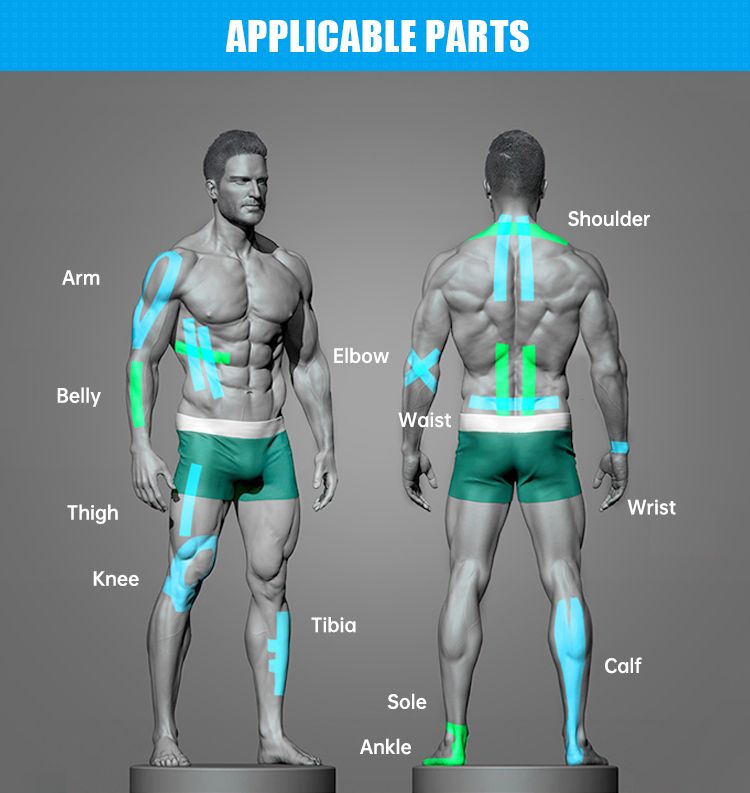
GET A QUOTE
What is Adhesive Tape Used for in a First Aid Kit?
When considering a first aid kit, people often think of band-aids and antiseptics. However, adhesive tape is just as crucial. This versatile tool is indispensable for securing dressings, supporting injuries, and even stabilizing splints in emergency situations. By understanding how adhesive tape is used, you can greatly enhance injury treatment.
In this article, we explore the different types of adhesive tape typically found in a first aid kit and their specific applications.
What is Adhesive Tape Used for in a First Aid Kit?
Adhesive tape is a versatile tool designed to adhere to the skin or other surfaces, commonly used in medical applications to secure dressings, bandages, and even medical devices. It typically consists of a thin strip with one side coated in a sticky, pressure-sensitive adhesive, which allows it to stay in place without the need for additional fasteners. Adhesive tapes come in various forms such as medical tape, cloth tape, waterproof tape, and more, each with specific uses.
Why is Adhesive Tape Important in a First Aid Kit?
In a first aid kit, adhesive tape is crucial because of its ability to provide quick, secure, and effective wound care solutions. Here's why it is essential:
Secures Bandages and Dressings: Adhesive tape holds gauze and bandages in place over wounds, protecting them from infection and contamination. This ensures that the dressing stays in position even with movement, allowing the wound to heal properly. Tapes like micropore paper tape or transpore tape ensure secure adhesion while maintaining breathability.
Immobilizes Injuries: In emergencies, adhesive tape can stabilize injuries like sprains and fractures by securing splints in place. This reduces further injury until professional medical attention is available. Cloth tape provides the durability and flexibility necessary to secure the splint while ensuring that the injured limb stays immobile. Applying a splint involves using the appropriate adhesive tape to maintain skin integrity while securing the injury without adding too much pressure.
Adapts to Various Conditions: With options like waterproof or hypoallergenic tape, it's suitable for different skin sensitivities and environments, ensuring that care can be provided regardless of the situation.
Fixing Medical Devices: In high-pressure situations, adhesive tapes are often used to secure medical devices such as IV lines. Tapes like micropore or transpore are ideal for this, as they adhere well while causing minimal skin irritation. Using waterproof tape may also be necessary in moist environments to keep devices in place.
Types of Adhesive Tape in First Aid Kits
Medical Adhesive Tape (Surgical Tape)
Medical tape is a key player in wound care. It allows for breathability and prevents infection while holding bandages securely in place. Micropore paper tape is especially suitable for patients with sensitive skin, ensuring comfort during long-term use.
For stronger adhesion in challenging environments, transpore tape and waterproof tape provide excellent alternatives that can withstand moisture or more active conditions.
Cloth Tape
Known for its strength, cloth tape is durable enough to secure large dressings or splints. Its breathability ensures that the skin can heal properly while maintaining its integrity. Cloth tape is also less irritating compared to other options, making it suitable for extended use.
Waterproof Tape
Waterproof tape is essential when the wound or injury may be exposed to moisture. This tape retains its adhesion, ensuring that bandages stay in place even in wet conditions, which can help prevent infections.
Micropore Tape
Gentle and breathable, micropore tape is ideal for sensitive skin. It's often used to secure dressings in sensitive areas, offering flexibility and preventing irritation. The hypoallergenic nature of micropore tape makes it a top choice for long-term wound care.
Tips for Choosing Adhesive Tapes
Consider Skin Sensitivity
Always choose hypoallergenic tapes like micropore paper tape for individuals with sensitive skin to avoid allergic reactions and irritation.
Evaluate Adhesive Strength
In high-pressure situations or for securing larger dressings, stronger adhesives like zinc oxide or waterproof tape may be necessary. For lighter tasks, micropore tape works well.
Select Appropriate Width
The width of the tape should match the size of the dressing or the area to be secured. Wider tapes offer better coverage, while narrower tapes like transpore tape are suitable for smaller, more delicate applications.
How to Properly Use Adhesive Tapes
Clean and Dry Surfaces
Before applying adhesive tape, ensure the skin is clean and dry. Dirty or wet surfaces can affect the adhesive's strength, leading to complications like infection.
Avoid Wrinkles
When applying adhesive tape, smooth it down to prevent wrinkles, which can compromise the tape's hold and allow contaminants to reach the wound.
Apply with Appropriate Tension
Ensure the tape is applied with the right amount of tension—tight enough to secure but not so tight that it restricts blood flow.
When NOT to Use Adhesive Tape
Adhesive tape should not be applied directly to open wounds or on individuals with known allergies to certain adhesives. Use alternatives like self-adhering wraps in cases of severe skin sensitivity or allergic reactions.
Conclusion
Adhesive tape is a small but essential tool in first aid. Whether you're securing dressings, stabilizing splints, or fixing medical devices, the right tape can make a big difference in injury care. By choosing the appropriate type for the task at hand, you'll help wounds heal faster and reduce discomfort for the patient.
Is your first aid kit stocked with the right adhesive tape? Make sure you have the best options on hand to handle any emergency. Explore our products today!

